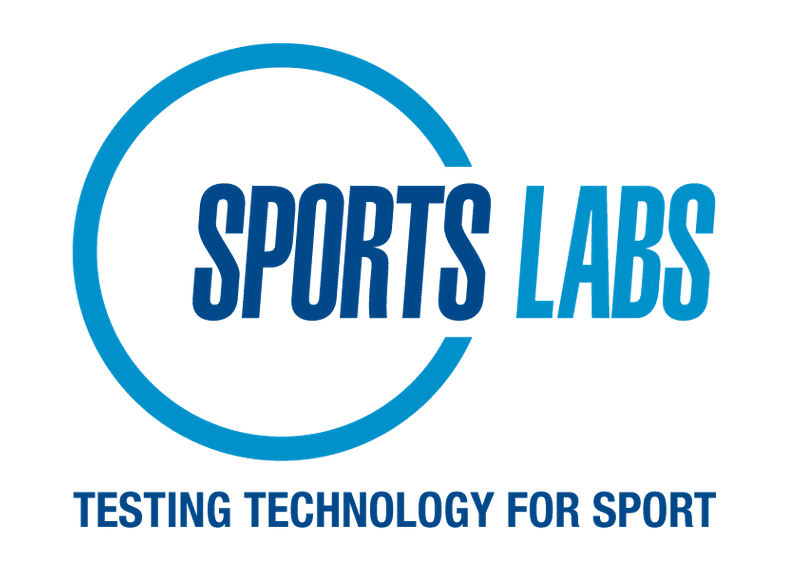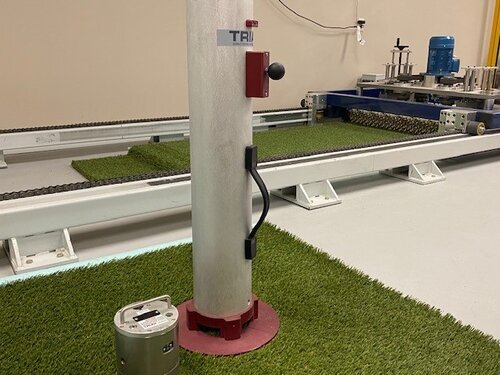Testing Athletic Fields in the United States Market
There are many tests available to assess the shock attenuation of your playing surface. The most common currently used in the USA by far is the measurement of GMax utilizing an ASTM F355 missile. This device has not changed much since it was first used back in 1971. It is probably one of the main and often times the only methods of regulating fields currently used. GMax is considered a safety assessment test first and foremost. It is a fact that the assessment of fields is evolving, and there are now sophisticated testing protocols that assess construction quality, player/surface interaction, and ball surface interaction, which are promoted through organizations such as FIFA and World Rugby. The use of a multiple-assessment approach is on the rise; however, another test that has gained traction in recent years and has come from a sport where similar player/surface impacts to football is Head Injury Criteria (HIC). Engineers, architects, and even coaches are drawn to this scientifically-based test with a long unbeaten record in the car industry to predict the potential for brain trauma.
What Does The GMax Measure?
GMAX; F355-A MISSILE, The GMax test drops a 20lb flat missile from 2 feet high.
GMax is a simple impact test which measures the shock-attenuation performance of sports surfaces and is used extensively to test synthetic turf and natural turf athletic fields. Test results referred to as GMax values are ratios of the maximum acceleration (deceleration) experienced during an impact to the rate of acceleration due to gravity. The higher the GMax value, the harder the surface. An excellent natural grass field (the benchmark for a quality athletic field) will produce a GMax below 100, and often below 80. Artificial turf over stone will provide a GMax above 140 and frequently higher, meaning the body absorbs far more impact energy than by the surface. The measurement of GMax is used as an indication of field safety. It is often misused to assess the playability of a field, but due to the mono parametric nature of the test, it is not a device that is capable of determining this property, which generally needs many diverse input data points to ascertain.
What Does HIC Measure?
HIC; ASTM F355-E MISSILE, The HIC impact test drops a 10.1lb hemisphere projectile (curved like a human head) multiple times from increasing heights and determines the Critical Fall Height of the surface.
The HIC test correlates with the likelihood and severity of a head injury, has been used to test playground surfaces for decades, and was adopted by ASTM for athletic fields in 2016. The higher the Critical Fall Height, the better protection the surface offers to impacts. A good natural grass field will produce a minimum critical fall height of about 6 feet or higher.
The HIC is a risk assessment tool and is mainly used to de-risk but not neutralize the potential for an impact causing some brain trauma. Head injury criteria are based on actual scientific measurements related to the likelihood of a brain trauma occurring as a result of an impact. The severity of the impact is measured in terms of the shock attenuation provided by a surface against a simulated head form dropped from a variety of heights.
One important point to note is the F355-A MISSILE measures GMax values and does not correlate with HIC. The F355-A missile is a different shape and weight from the F355-E missile. HIC is often misleadingly reported alongside GMax values, and unless the F355-E missile is used, then the values reported are meaningless.
Concussion Conversation
There are a few things to get straight about GMax and HIC testing. The growth in the use of HIC testing as a measure of the safety of the field is vested in the high-profile debate concerning concussions in football, and it has been underscored by mild traumatic brain injury (MTBI). Preventing concussions in sports has become a national priority. Studies show that 1 in 5 concussions occur by a head to surface impact, and higher energy impacts between the body and the surface also take their toll.
Warranties
GMax is generally linked to the warranties provided by the manufacturers for the field, and a manufacturer will offer a warranty on the field that the measurement of GMax will not exceed a given value for a set period, which can be five years or more. It is not a difficult criterion to meet, so for this reason, GMax will always be around. Purchasers, architects, engineers, and indeed users are beginning to understand that a field's performance and safety are not assessed by one straightforward impact test. Good design includes the use of shock pads together with technical performance infills. HIC is a better tool because it provides perhaps the best safety test available.
It is a fact that the extensive use of GMax-only specifications has led to many fields being too soft for the athlete. Many fields are still constructed with infill ratios of 50/50 SBR and sand, even though it is utilizing a pad, player feedback tells us to “provide a firm, fast but shock absorptive field” - something a more sophisticated testing regime would undoubtedly deliver.
It speaks volumes when current quality pad manufacturers provide warranties for new fields, and compliance is based solely on the GMax performance of the shock pad without the turf and infill installed. GMax criteria need to be looked at carefully.
What we see now is the growing adoption of multiple test protocols to regulate athletic fields. We would like to see the design of athletic fields adopting HIC as one of the primary and leading compliance criteria.





